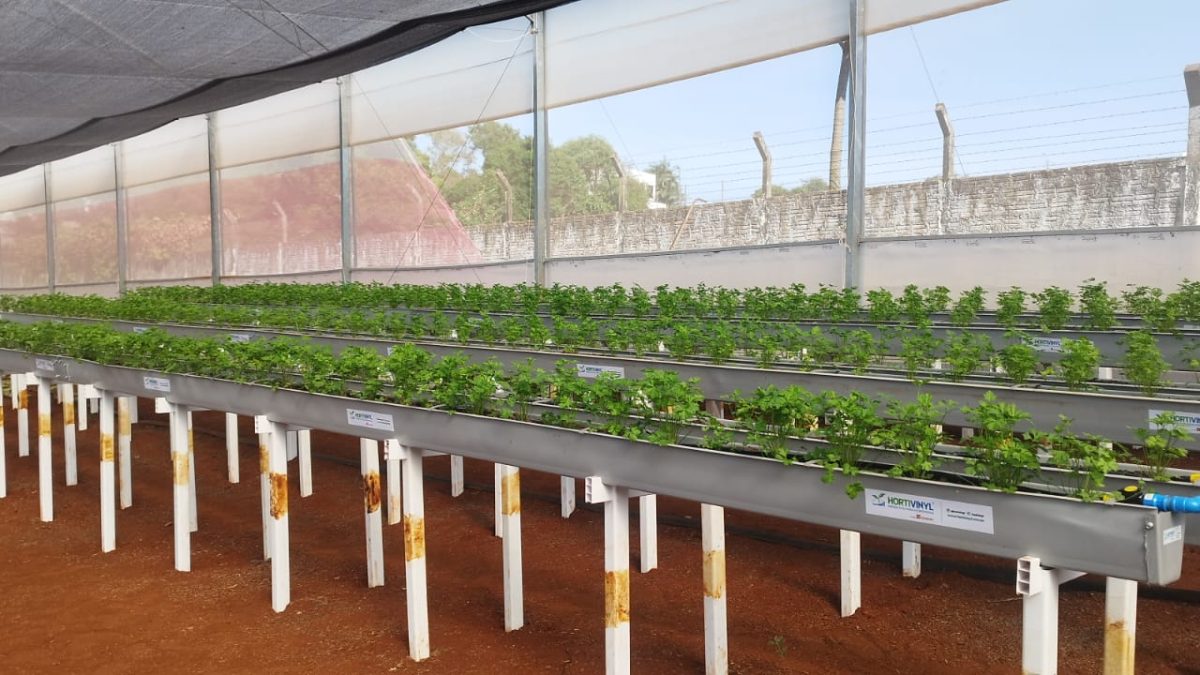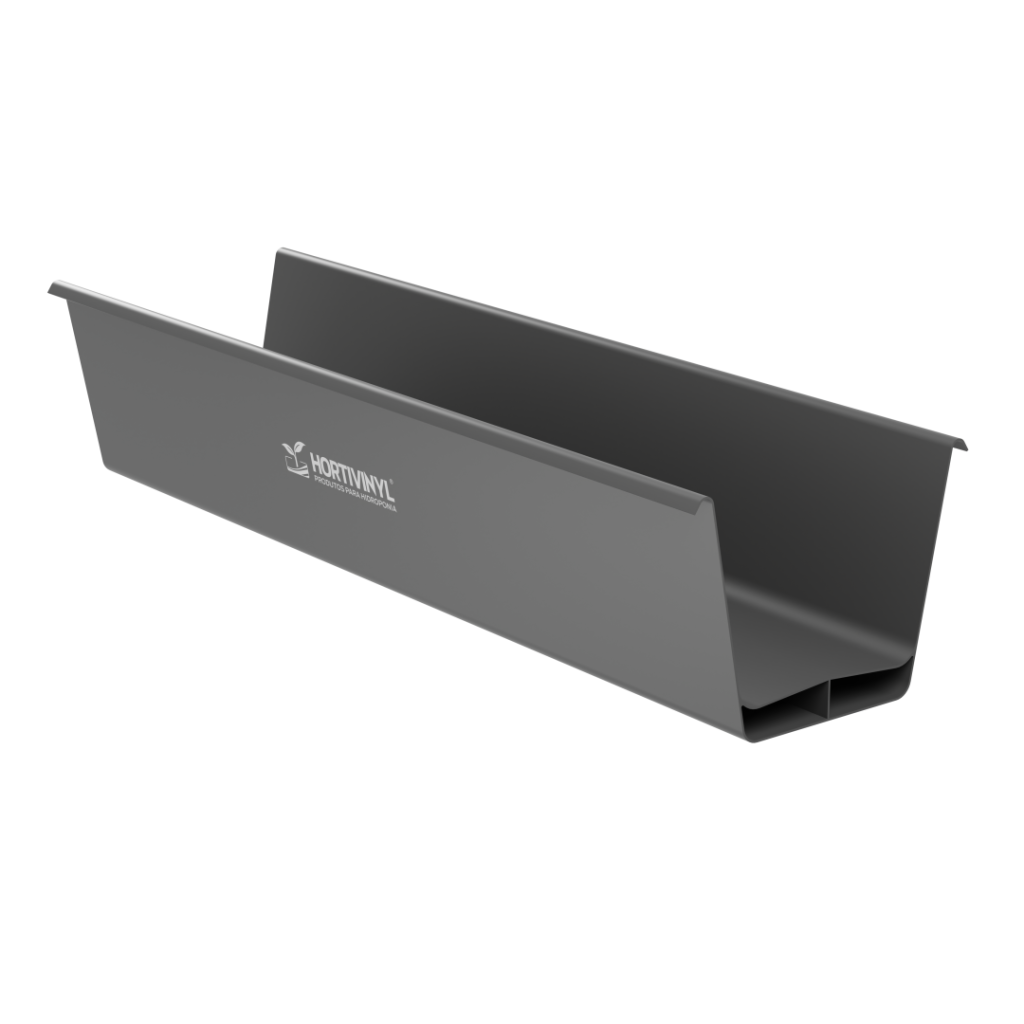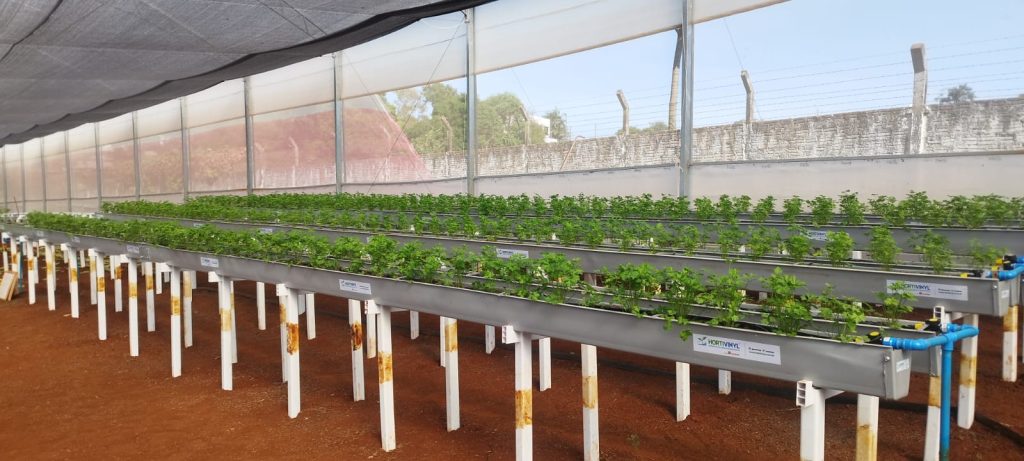
The growing channel in substrate represents a modern and efficient solution for agriculture, combining productivity and sustainability. This product stands out as a viable and promising alternative for producers looking to increase the productivity and quality of their crops. Adopting substrate growing channels can be an important step towards more sustainable and profitable agriculture.
What It Is
The substrate growing channel is an innovative product used in modern agriculture. It consists of the use of channel-shaped structures supported on stands, which can be filled with specific substrates for plant cultivation.

These substrates can vary from sand, coconut fiber, perlite, vermiculite to other inert materials that provide physical support and retain the moisture and nutrients needed for plant development.
How the Dry Channel Works
The operation of the substrate growing channel is relatively simple and efficient. The channels are installed with a slight slope to allow for proper drainage of irrigation water. Plants are grown directly in the substrate contained in the channels, receiving the necessary nutrients through a fertigation system.

This automated irrigation system mixes soluble nutrients with the irrigation water, distributing them evenly along the channels, preventing waterlogging and the development of root diseases. This system can be implemented both in greenhouses and outdoor areas, adapting to different types of cultivation and climatic conditions.

Cultivation in Growing Channels
They are ideal for growing strawberries, peppers, cucumbers, tomatoes, spinach, aromatic herbs, leafy greens, spices, among others.
Advantages
Using substrate growing channels offers several advantages compared to traditional soil cultivation methods. Some of them are:
Efficiency in Water and Nutrient Use
With the fertigation system, water and nutrients are supplied directly to the plant roots, minimizing losses due to evaporation and leaching. This results in a more efficient use of resources, reducing water and fertilizer consumption.
Disease and Pest Control
It significantly reduces plant contact with parasites, bacteria, and viruses present in the soil, decreasing the incidence of root diseases. Additionally, the elevated structure of the channels makes it difficult for terrestrial pests to access, contributing to a healthier growing environment.
Better Control of Growing Conditions
It allows for more precise control of environmental conditions, such as temperature and substrate moisture. This enables the creation of an ideal environment for plant growth, regardless of external climatic conditions.
Ease of Management and Harvesting
The arrangement of plants in channels makes daily management, such as irrigation, pruning, and harvesting, easier. The elevated height of the channels reduces the need to bend over, providing better ergonomics for workers and increasing operational efficiency.
Sustainability and Lower Environmental Impact
This technique promotes sustainable agriculture by using recyclable materials and reducing the need for chemical inputs.
Versatility
They can be used for a wide variety of crops, from vegetables and fruits to ornamental flowers. This versatility allows producers to diversify their production and cater to different markets.
Hortivinyl growing channels are made from a co-extruded profile of 100% virgin, non-toxic PVC, ensuring safety and durability. They are designed for easy installation, handling, and cleaning, providing practicality for the user.
Sizes
Height | Width | |
External | 150 mm | 194 mm |
Internal | 120 mm | 170 mm |
The channels have an internal capacity of 18 liters and are available in lengths of 3 to 6 meters, with the possibility of joining them to reach the desired length.
